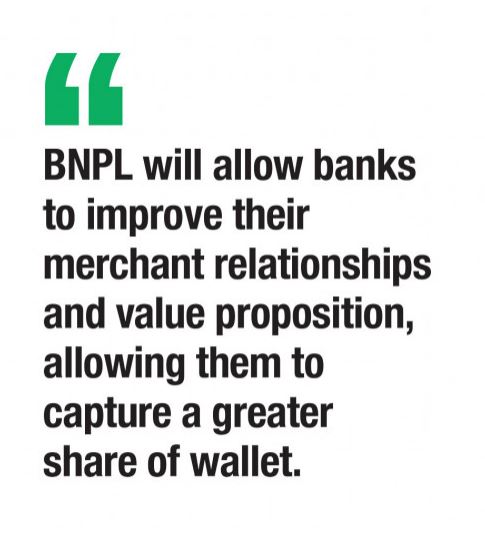The rise of Buy Now, Pay Later in Thailand
Thailand is one of the most exciting and fastest-growing retail markets in Southeast Asia, having been an early adopter of new trends driven by digital-first consumers, which has contributed to rapid growth of e-commerce in recent years.
The mobile commerce market, led by mobile applications, is expected to grow at a compound annual growth rate of 12% to US$25 billion by 2023.
From travel to consumer electronics and fashion, a diverse range of online retailers is constantly identifying key profitability drivers while keeping offerings and payment options appealing and convenient for their customers.
Financing at point-of-sale, a service also known as Buy Now, Pay Later (BNPL), has grown in popularity as a win-win proposition for both retailers and customers. It not only helps increase revenue, it also allows consumers opportunities to acquire goods they would not be able to afford otherwise.
This new financing option has been thriving in Thailand, and prospects show that it is here to stay: gross merchandise value of BNPL transactions in Thailand is expected to reach copy5.8 billion by 2028, up from $893 million in 2021. Now financial institutions must decide whether to join the BNPL herd with their own offerings or risk being left behind.
WINNING FORMULA
BNPL is a type of short-term financing that allows customers to buy products and pay for them in the future, at zero or low interest. Repayment terms vary depending on the provider, but typically include payment in full by the end of month, pay-in-3 (three equal monthly payments) or pay-in-4 (four equal biweekly payments).
This financing option is fast, convenient, flexible and democratic. It is especially beneficial to young consumers who are digitally savvy and have limited financial resources (entry-level workers or students), or those who do not have a bank account or do not qualify for credit or loans.
These consumers feel they do not need to access credit as long as they can access BNPL; they simply defer payment. Additionally, they are also given the ability to try out a product at no expense at the time of purchase.
BNPL has numerous advantages for retailers and merchants. Those that included this financing option in their business strategy saw higher sales conversions and larger basket sizes, market surveys have shown. Some 41% of global consumers are more likely to buy in a store that offers BNPL and many are already benefiting.
For example, after introducing BNPL options provided by Klarna, a major European fintech company, the UK fashion retailer Hype recorded a 38% increase in online sales conversions.
It’s now up to Thai banks to decide whether this approach will work for them, their partners and customers.
Fintech providers were the first to champion BNPL, particularly through mobile apps or collaborations with online platforms to provide this type of embedded finance, which involves the seamless integration of financial services adopted by non-financial companies.
The Covid-19 pandemic, the e-commerce boom and economic pressure, on the other hand, have transformed BNPL into a growth engine for e-commerce businesses and lenders, including banks.
SPEED OF THE ESSENCE
While a handful of Thai banks are exploring BNPL solutions, the rest may lose out if they do not act fast. According to research, BNPL fintechs have already diverted between $8 billion and copy0 billion of annual revenue away from banks globally.
This does not have to be the case, as 70% of BNPL users would be willing to use BNPL offerings from their banks if they were available.
With massive potential for continued growth, Thai banks must approach BNPL strategically and decide whether and how they will play a role in this new business line. Making it part of their offerings will be critical, as BNPL is rapidly eclipsing traditional consumer finance models, such as bank credit or personal loans and even, in some cases, debit cards.
BNPL will allow banks to improve their merchant relationships and value proposition, allowing them to capture a greater share of wallet through cross-selling and customer acquisition.
Banks and retailers seeking to introduce BNPL offerings should choose partners that give them a head start by taking full advantage of their flexible technology solutions and domain expertise.
Source: https://www.bangkokpost.com/business/2382451/the-rise-of-buy-now-pay-later-in-thailand


 Thailand
Thailand




